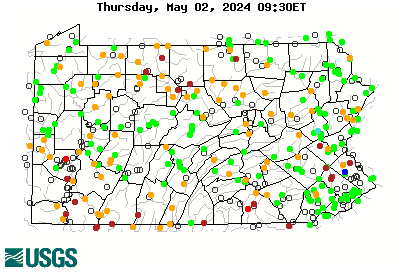pcray1231
Well-known member
You're reading into the noise. The gray area where gradient and stream size predict you are on the boundary between brook trout and brown trout water. And some streams in this gray area are brook trout only, some are sympatric, and it's not in the table, but looking at the charts, some are brown trout only too. There must be some difference between these.Gradient and stream size does not uniformly predict species presence in this study because there are streams of the same size and gradient that are sympatric brook/brown and ones that just have brook trout so there must be another factor driving species composition in those streams besides gradient and stream size. Thats obviously is not proof of causation since neither group had a barrier but again it highlights something besides size and gradient are at work there.
I agree with that. I will say that NONE in that category had barriers, so barriers are NOT the difference. There are other factors at play that are lost in the noise. There could be 1000 factors. When you get right on that gray area, small signals have big effect, you are in chaos theory territory. Butterfly effect. A stream right on that boundary that solidly favors neither species, the slightest push will push it one way or the other. 60 years ago a pair of browns and brookies spawned beside each other, and a racoon walked through one of the redds...
Regarding barriers, the only conclusion in this study is: If the physical characteristics of a stream solidly favor brook trout over brown trout, it will be a brook trout stream regardless of whether a barrier is present or not.
Anything beyond that on the question of barriers is neither supported or refuted by the data. Both sticks and I agree that barriers are probably sometimes beneficial. So do the authors. But that does not mean that the data collected in this study backs it up or can be used to justify it. I fully get that you have a position, and wish to find solid scientific evidence to support your position. An appeal to authority. I share your position based on gut feel and experience. But this particular batch of data is not evidence to back it up.
Last edited:





